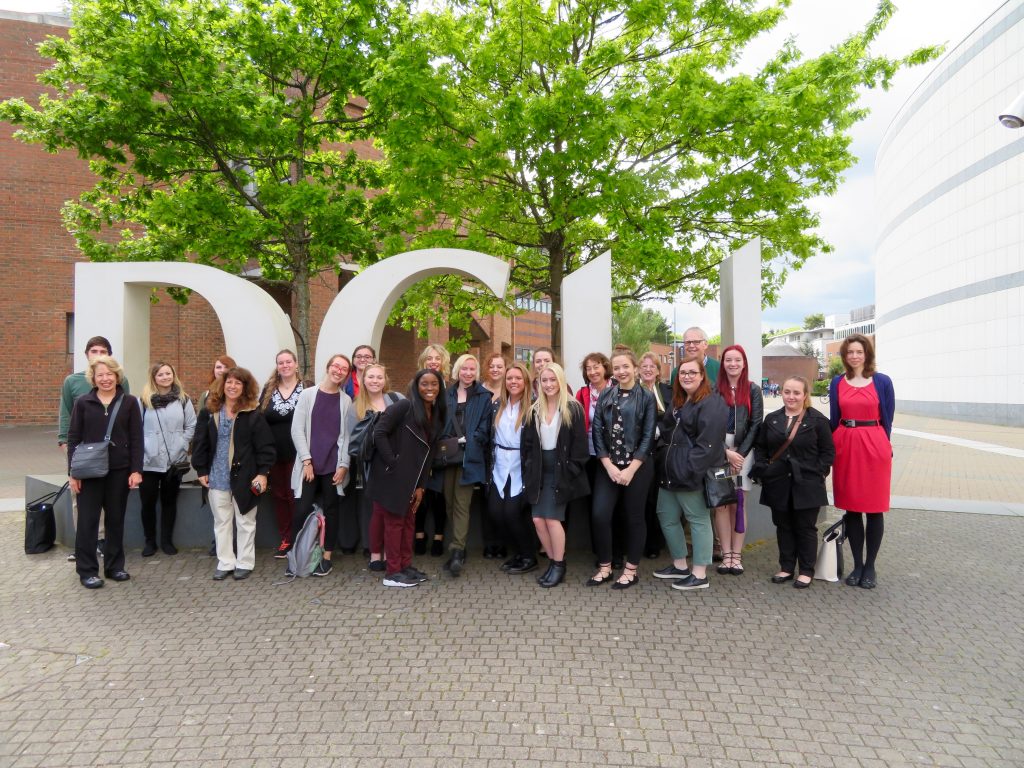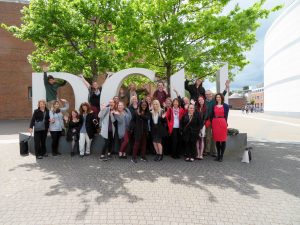
By: Kristin Snapp
Dublin City University professors and students study the media and journalism by researching Ireland’s conservative past and tracing its move toward a deeper, more encompassing approach to its work that reflects societal and cultural changes in the island nation.
Point Park students traveled to the outskirts of Dublin to hear about this work and more from Dr. Eileen Culloty, a senior researcher at DCU.
Culloty spoke to students about media in Ireland, including advertising, journalism and broadcasting. She covered the long history of media, touched on its current state of affairs and spoke about what the future of media in Ireland might look like.
Culloty first spoke to students about media censorship during the 20th century. She rattled off books like “Brave New World” and “Catcher in the Rye” that were banned in the country.
Movies like “Gone With the Wind,” “Casablanca” and “The Graduate” were edited and released in Ireland after all references to sexual affairs had been omitted. Films were not banned, just edited so there was no sex or kissing.
“If you had any kind of creative spark whatsoever, you were leaving the country because there was no place for it,” Culloty said. “Even if you got an education, you were going to leave. It was just inevitable.”
But in the 1990s, a number of legislation changes shifted the culture’s view of ideas that were previously thought to be controversial. Ireland elected its first female president in 1990, which stifled much of the sexism present in both culture and media; homosexuality was decriminalized in 1993; although it took five to six years to fully implement the new change, divorce was legalized in 1994.
These changes, in turn, affected media. The first on-screen gay kiss aired in Ireland in 1993. TV helped point out that homosexuality was normal, which led to the eventual legalization of gay marriage in 2016.
In 1994, Riverdance, the famous Irish step dancing group, performed during the Eurovision song contest intermission. Culloty says this performance looked modern to viewers and showed Irish culture as revitalizing, and this helped encourage people who had left the country due to stifled creativity to return.
As for the current state of media, Culloty noted that TV in the country is struggling. Rather than people paying a cable bill, as is customary in the U.S., TV owners in Ireland must pay a licensing fee, which is then doled out to traditional broadcast stations for production purposes – but it does not cover the total costs, and advertising revenue has to be found.
Just as many U.S. media platforms are struggling to attract younger audiences, the Irish TV industry sees the younger demographics consuming less traditional TV and instead turning to streaming services like Netflix and Hulu.
To combat these issues, Culloty says the country is considering a “broadcasting charge,” that would implement a charge for those consuming news on their smartphones or laptops.
The most recent Oxford Reuters Digital News Report in 2016 shows that the Irish are most interested in regional news first, followed by international. In a stark contrast to media in the U.S., entertainment came in last place.
According to that same report, the Irish have a lot of trust in their news outlets, even with “fake news” being such a hot-button term right now.
“When people think of news in America, they think Fox News,” Culloty said with a laugh. “So, when they hear ‘fake news,’ they just think it’s a part of America’s crazy media.”
Culloty also clued students in on the current state of newspapers and radio programs in Ireland. Of those who paid for newspapers last year, 53 percent paid for the printed newspaper rather than a digital edition.
According to Culloty, 88 percent of respondents did not pay for their online news while just 9 percent did.
“English-speaking countries have low online payment because there are a lot of free sources and other options,” Culloty said.
As for radio, Ireland boasts the highest listening rate at 39 percent. Podcasts are on the rise, as well, which Culloty attributes to storytelling being an ingrained feature in Irish culture.
DCU has a project they call FuJo, the institute of future media and journalism. FuJo works to analyze media on a number of platforms, from digital literacy and misinformation to consumption trends, media trust and online hate speech. The project includes a number of media partners.
“We’ll face a lot of challenges in the future, too,” Culloty said. “We have a young and growing population, and there are a lot of technological advances to take into consideration to keep up with what’s new.”